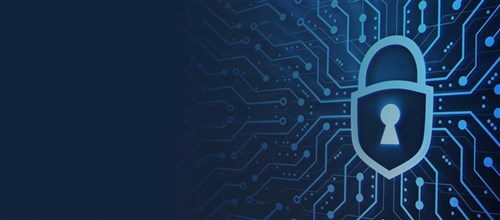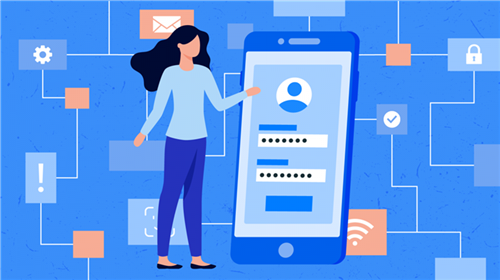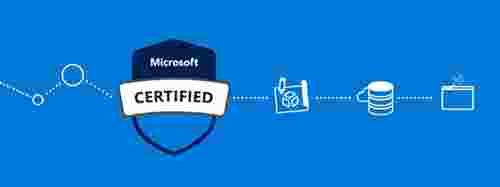(1).pngL.jpg)
What is Network Security?
What Are The Different Devices and Tools for Network Security?
- Access Control: This is the tool that determines which specific users get to access the network, particularly sensitive parts of the network. With customised security policies, network administrators can restrict access to the network and allow access to authorised users and devices only. You can also modify these policies to limit access for non-compliant or unauthorised users.
- Anti-malware Software and Antivirus: Malicious software, shortened to ‘malware’, is a very common kind of cyberattack that works in different forms. Sometimes, a malware attack deletes or corrupts all your data. Other times, it will remain dormant within your network while allowing hackers secret access to your system network. Antivirus software monitors network traffic, scans activity logs and looks for suspicious behaviour patterns, all in real-time. It then offers threat remediation methods for you to control the damage
- Application Security: Every device used in your network environment is a potential target for hackers to access your network. You must ensure your programs are updated and patched regularly so that cybercriminals have significantly lower chances of finding and exploiting vulnerabilities in your network. This keeps sensitive data safe and inaccessible to them. Application security is a combination of software, hardware and industry best practices that you can use to monitor problems and close gaps within security coverage.
- Behavioural Analytics: To recognise suspicious behaviour, a network’s security support personnel must establish and define what comprises normal behaviour for a client’s users, applications or network overall. Software for behavioural analytics has been designed to identify predetermined indicators of what ‘abnormal’ behaviour’ looks like. Such behaviour is almost always an indicator of a security breach or attempted criminal activity. By defining baseline behaviours for customers, spotting problems and threats become easier and faster.
- Data Loss Prevention (DLP): DLP technology refers to programs that restrict employees of an organisation from sharing precious organisation information and sensitive data beyond the company network, whether on purpose or unintentionally. DLP technologies prevent acts that can possibly expose information to malicious third parties beyond your network environment. This includes forwarding messages with data, downloading files, taking prints etc.
- Distributed Denial of Service Prevention (DDoS): DDoS attacks have become increasingly common and continue to grow. They overload networks with one-sided requests for connection, eventually causing a crash. DDoS prevention tools filter incoming traffic to keep unauthorised traffic threatening your network security away. This might include hardware appliances that filter traffic before threats reach your firewall.
- Email Security: While implementing network security tools, emails are an important factor to consider. Several threats such as phishing, suspicious links, malware and scams are often shared as a part of emails. As many of these threats use elements that include personal information, they appear more genuine. Organisations and network security personnel need to ensure employees get enough network security training so that they can identify suspicious emails and threats. Software for email security filters incoming email threats and documents and can prevent outgoing messages from sharing various kinds of data.
- Firewalls: A firewall is a common part of various network security models. Its basic functionality is gatekeeping a network’s data and information and keeping it safe from the larger internet environment. Firewalls filter and restrict incoming and outgoing traffic, comparing their data against predefined policies and rules. This keeps threats away and prevents them from accessing your network and data.
- Mobile Device Security: Everyone who is connected to a network often accesses it from two main points - the office system and their mobile devices. This means most mobile devices also contain sensitive information that needs protection against cyberattacks. Hackers know that while people protect their desktop and laptops within the network, remote access points like mobile devices remain vulnerable. By adding mobile device security, network access can easily be limited. This ensures network traffic remains private and data is not leaked through vulnerable connections and practices.
- Network Segmentation: When you divide and sort network traffic on the basis of specific classifications, it streamlines work for the security support team while they apply policies. A segmented network also makes assigning or denying authorisation much easier, ensuring that no one can access information that is not meant for them. Network segmentation also enables the identification and removal of potentially compromised devices.
- Security Information and Event Management (SIEM): SIEMs are security systems that work by combining network-based and host-based intrusion-detection systems. This is done by putting together network traffic monitoring in real-time with historical data logs and file scanning, thus providing administrators with a detailed view of all network activity. A SIEM is similar to an IPS (intrusion prevention system) that scans network traffic to detect suspicious activity, unauthorised access and policy violations and then blocks intrusion attempts.
- Web Security: There are a few main purposes of web security software. It restricts access to the internet for employees, preventing them from accessing sites with malware. Web security also blocks web-based threats to protect web gateways for audiences and customers.
Also Read: Cisco Certified Network Professional (CCNP) Certification Path 2021
As technologies advance, so do cyberattacks. A Positive Technologies report indicated that healthcare and government organisations are quickly becoming strong targets for malicious hackers. The report also showed that over 50% of cybercrimes aim to steal data, while 42% aim at financial gain by attacking individuals.
With the world getting increasingly digitised, these threats will only grow further. Global organisations need professionals who can help them function securely. Want to start learning about network security as a career? Enrol in a training course today with Koenig.






.pngM.jpg)
COMMENT